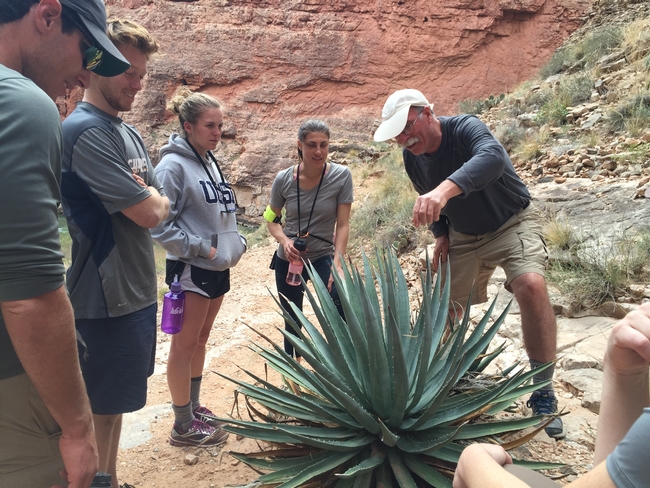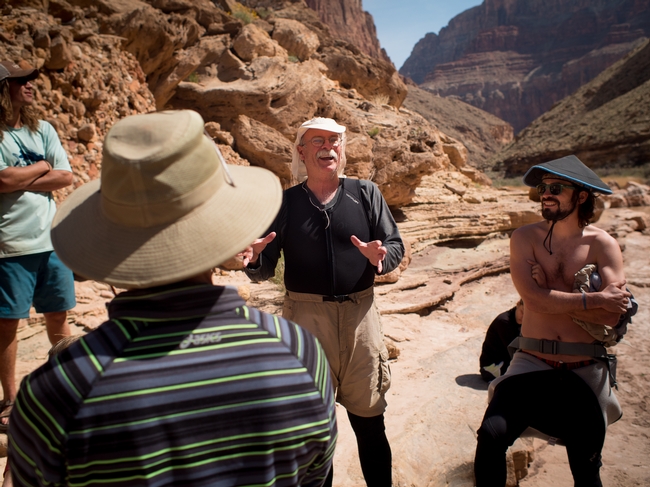Posts Tagged: Young
UC Davis Grad Students Set 'Animal Behavior' Program at Davis Library on Aug. 19
It promises to be a program to remember. Nine members of the UC Davis Animal Behavior Graduate Group (ABGG) who are active in The...

Nicole Keough leads an outreach event. As an undergraduate student, she was volunteering at a public ESL (English-as-second language) elementary school, teaching first grade students about ant physiology and anatomy. Note the large ant in front of her.

Live termites will be shown by PhD candidate Nicole Keough at The Ethogram outreach program from 2:30 to 4 p.m., Monday, Aug. 19 in the Blanchard Room of the Mary L. Stephens branch of the Davis Library, 315 E. 14th Street, Davis. (Photo by Nicole Keough)

Stick insects from the Bohart Museum of Entomology petting zoo will be featured at The Ethogram event from 2:30 to 4 p.m., Monday, Aug. 19 in the Blanchard Room of the Mary L. Stephens branch of the Davis Library, 315 E. 14th Street, Davis. (Photo by Kathy Keatley Garvey)

This is a screen shot from The Ethogram blog.
Guodong Zhang, a Rising Star from the Bruce Hammock Lab, Wins Interntionial Award
Congratulations are in order! Associate professor Guodong Zhang of the University of Massachusetts' Department of Food Science and a...

Hammock lab alumnus, Guodong Zhang, associate professor in the University of Massachusetts' Department of Food Science, is the recipient of the Foods 2021 Young Investigator Award. He is shown here in the Hammock lab. (Photo by Kathy Keatley Garvey)
This Hover Fly Engages in Identity Theft
The wonderful world of insects... Have you ever seen a syrphid, aka hover fly or flower fly, that resembles a bumble bee? Volucella bombylans is a...

A hover fly that's a bumble bee mimic: this is Volucella bombylans complex. (Photo by Kathy Keatley Garvey)

The hover fly, a Volucella bombylans complex, departs its perch. (Photo by Kathy Keatley Garvey)
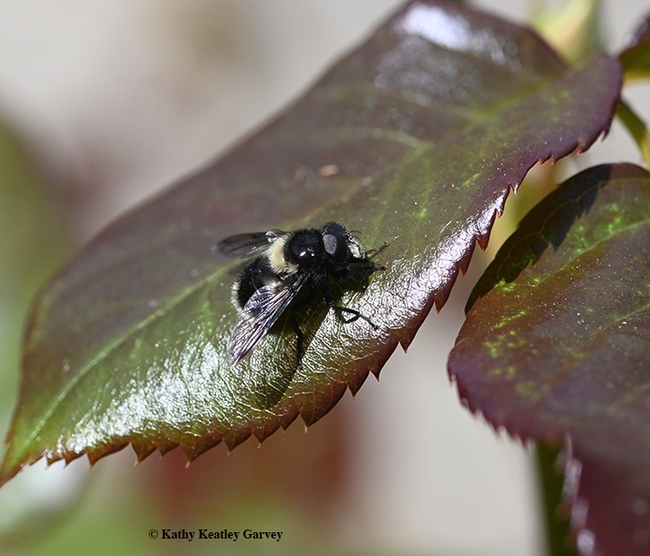
It's a fly; not a bee! Side view of the syrphid fly bumble bee mimic, Volucella bombylans complex. (Photo by Kathy Keatley Garvey)
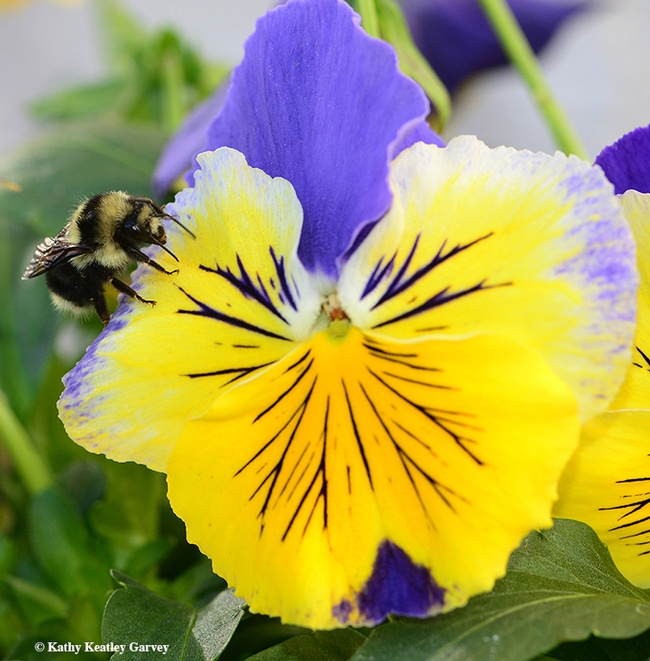
A bumble bee, Bombus melanopygus, investigates a pansy. This image was taken in Vacaville, Calif. (Photo by Kathy Keatley Garvey)
Andrew Young: Natural History of Syrphids, from Pollinators to Parasitoids
At first glance, they're often mistaken for bees, but bees they are not. They're flies. You've probably seen them hovering over flowers, which is...
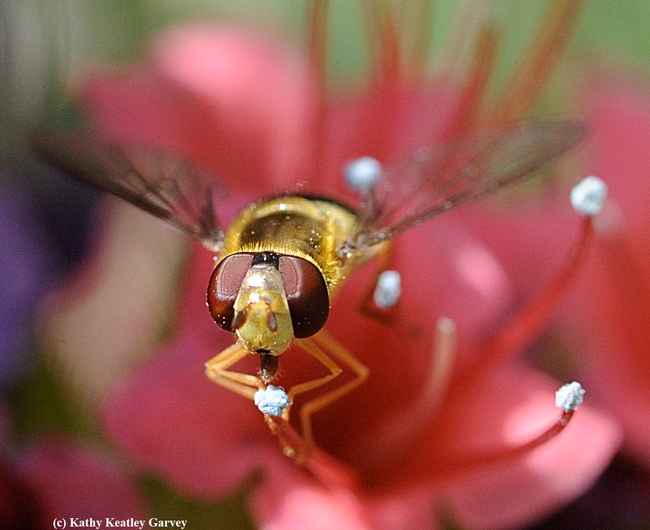
A syrphid, also known as a hover fly or flower fly, nectars on a tower of jewels, Echium wildpretii, in Vacaville, Calif. (Photo by Kathy Keatley Garvey)
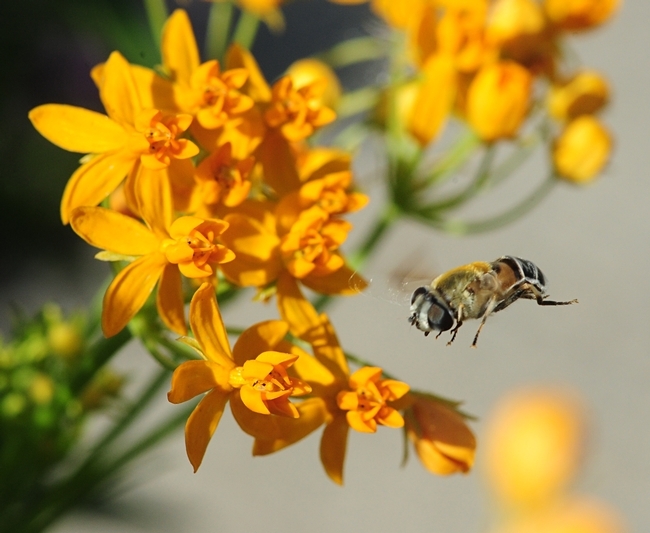
A syrphid in flight, heading toward a tropical milkweed, Asclepias curassavica. (Photo by Kathy Keatley Garvey)
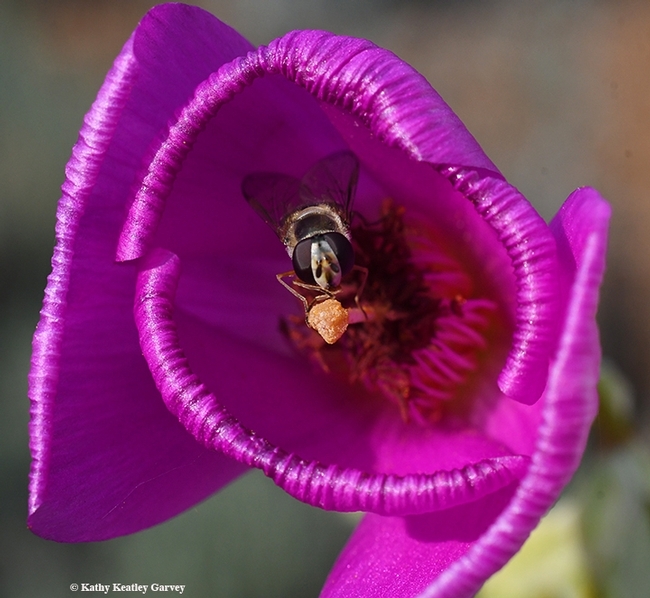
A syrphid tucked inside the petals of a rock purslane, Calandrinia grandiflora. (Photo by Kathy Keatley Garvey)
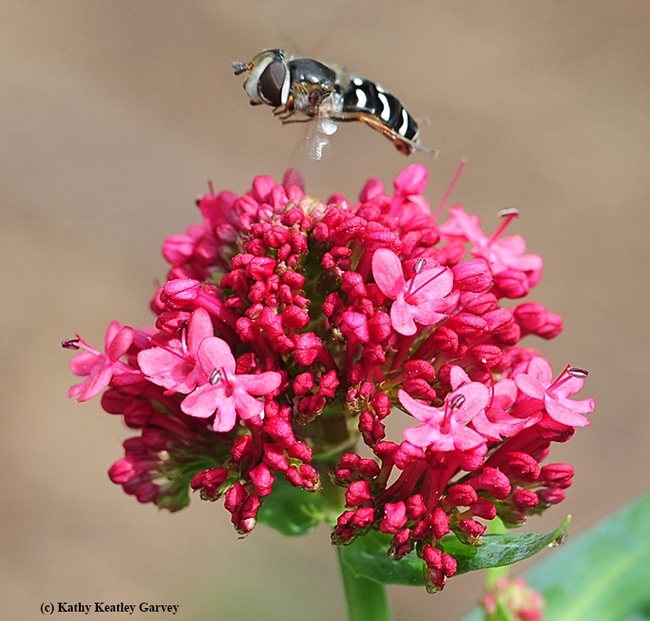
A syrphid hovers over Jupiter's Beard, Centranthus ruber. (Photo by Kathy Keatley Garvey)
Canyon Classroom: Exploring the Grand Canyon's plants along the Colorado River
While some people were spending spring break at the beach or catching up on their Netflix queue, students from the EcoGeoMorphology class at UC Davis were rafting down the Colorado River at the bottom of the Grand Canyon.
[Join the journey: UC Davis Grand Canyon interactive website, http://grandcanyon.ucdavis.edu.]
The class split in two groups for the 225-mile river journey. On March 10, the group embarked from Lee's Ferry, rafting 90 miles before hiking to the rim on March 19 along Bright Angel Trail. They passed the second group on their way down the same day. They traveled the remaining 135 miles to the next road access at Diamond Creek.
The class is conducted during winter quarter by the Department of Earth and Planetary Sciences and the Center for Watershed Sciences, in partnership with Campus Recreation's Outdoor Adventures. While its first trip to the Grand Canyon was in 2003, students have taken this optional trip for each of the past five years.
Among the class' instructors this year was UC Davis plant sciences professor and UC Agriculture and Natural Resources affiliate Truman Young.
‘There's nothing quite like this'
The trip is the physical and visible representation of what the class is all about: Geologists, hydrologists and ecologists learning to communicate with each other and the public. It's a skill necessary in real-world careers, where working on environmental problems requires a variety of expertise that isn't always taught in siloed classrooms.
“I'm not a geologist myself, but you only have to look left to right at any moment, and there's nothing quite like this,” said Young while floating down the river, taking in the cliffs rising around him.
The classrooms are pretty spectacular: red walled caverns, ancient Puebloan ruins, rock formations and fossils, the river itself. It's the students' textbooks brought vividly and tangibly to life.
Along the way, Young described the life cycle of Century plants; explored the plants sprouting around Vasey's Paradise, a natural spring; and rubbed scale insects off prickly pear plants to expose the crimson dye they produce. At each step, he casually prodded the students to consider what it means to have a river running through a desert.
Time travelers
The group was unplugged, off-grid, and literally immersed in the river, rocks and landscape.
Geologists, ecologists, and hydrologists helped teach each other about rocks, plants, fish and flow rates—usually informally as they scrambled up a trail or gazed up at the vertical cliffs slowly floating past.
They slept each night under a sky bright with forgotten stars, to the sounds of softly strumming guitar and the nearby rushing river.
Over the course of eight days on the river, they traveled through about a billion years of geologic time.
Young had been on the trip once before, two years ago. He said it was just as impressive the second go-around.
“It's actually more spectacular on the second pass, which surprised me,” he said. “Just the magnitude and the grandeur of it, all that stuff. It's just more.”



